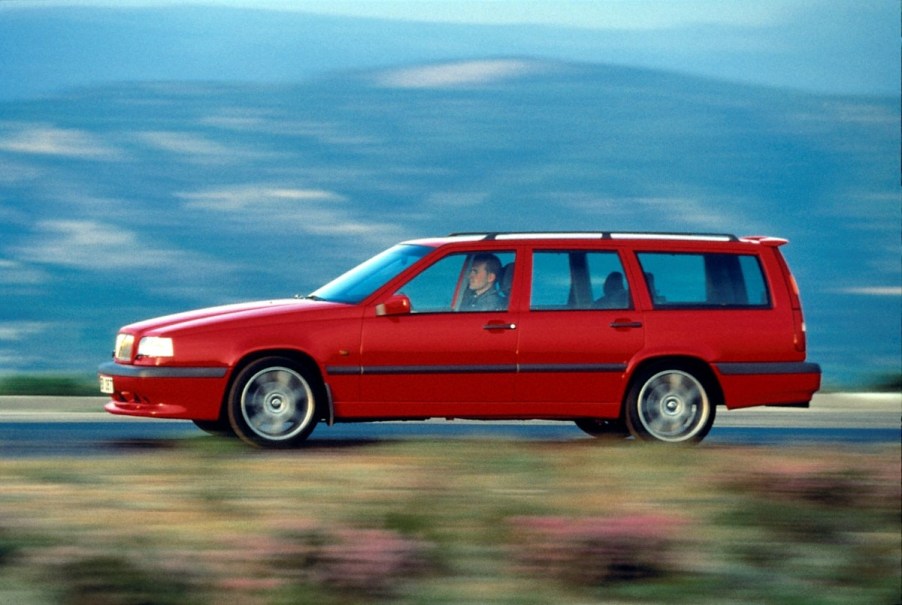
American Regulations and Greed Killed the Wagon, Not Consumers
These days, SUVs are everywhere. But if you look back to the 60s and 70s, the family mover of choice was the humble station wagon. So where did all the wagons go? And why have we instead opted for less efficient SUVs despite their similar (or reduced) cargo space? It turns out, it’s not so much a consumer preference, but automakers and greed that killed the wagons in America.
CAFE Regulations in the 1970s
In 1973, the U.S. saw an oil crisis that spiked prices and cause shortages across the country. Thanks to the Iran oil embargo, there was simply less fuel to go around. Sound familiar? It’s not much unlike the fuel spikes we saw with the Russian oil embargo in 2022.
Unlike that more recent example, though, Americans were entirely reliant on gas-powered vehicles to get around. And to combat rising prices and reduced supply, a series of average fuel economy requirements meant that all new vehicles had to become more efficient.
How did CAFE kill wagons in America?

Here’s where things get sticky. Because farming is, rightfully, viewed as an essential, almost sacred, component of American life, ‘passenger vehicles’ were subject to stricter rules than ‘light trucks’. And this distinction led automakers to find unique loopholes.
The formula is rather complex, but simply put, vehicles of a certain ride height, with certain front and rear bumper overhangs, specific weights, and cargo space can be classified as light trucks, and thus have less strict fuel economy requirements.
However, this allowed automakers to use more efficient, compact platforms to boost their light truck efficiency ratings. The rules are so convoluted that, despite being based on a compact sedan, the Chevy HHR could be classed as a light truck. The same is true for the even more incapable PT Cruiser.
And even with updated CAFE standards in 2011 that took footprint into account, wagons still couldn’t make the cut. Because the fuel economy for an entire brand is taken as an average, wagons stopped making sense.
CAFE standards lead automakers to kill the wagon in America
CAFE is simply an average fuel economy standard for both passenger car and light truck category vehicles from a single automaker. For example, Toyota has to average its Corolla, Prius, Crown, etc.. all under the passenger vehicle banner. Meanwhile, the RAV4, Tacoma, and Venza fit under the Light Truck umbrella.
Wagons, because of their low ride height and sedan proportions, are considered passenger vehicles, rather than light trucks. And because the wagon’s shape is inherently inefficient, automakers would need much more fuel-efficient cars to offset the difference.
The problem is, cheap, efficient cars aren’t very profitable. This example, from AutoEvolution, cites the European Volkswagen-owned Skoda. But the problem is the same no matter which brand you consider.
The cost to make, say, a Highlander SUV isn’t all that different from a Toyota Corolla. But Toyota can sell the Highlander for $15,000 more. There’s little incentive for the manufacturer to produce a subcompact sedan at all. Then to consider adding one just to lower the company’s average fuel efficiency for the sake of a wagon? Not going to happen.
Even Volkswagen, whose Jetta and Golf Wagons are still ubiquitous in the Northern U.S., killed those wagons in America after 2019. And if you want an example of just how little VW wanted to sell those wagons by the end, the lowest cost of a new Golf Sportwagen was $23,000 in 2019. Nearly identical to the entry-level Tiguan SUV of the same year. Meanwhile, the Golf Hatchback cost $2,000 less than both, despite an identical chassis and powertrain to the Sportwagen.
Which brands still make wagons in 2023?

Looking at the new car market in 2023, there are scant few wagons left. Subaru has the most, with lifted options like the Outback and Forester classing as SUVs these days. And then there’s Volvo, which sells a hybrid-only V60 and then both a V60 and V90 Cross Country. That CC package adds both ride height and an all-wheel drive system that puts them in light truck territory, lowering their efficiency requirements. Finally, there is Audi. The low-volume RS6 Avant is a muscular powerhouse, while the A4 Allroad gets the lifted suspension treatment.
Wagons aren’t coming back any time soon
Unfortunately, with a continued focus on fuel efficiency and now, electrification, we likely won’t see new wagons hit the market in the near future. That’s a shame because their blend of driving dynamics and function make them a great one-car solution. But until American regulations adjust away from favoring SUVs, we’re looking at more of the same.




